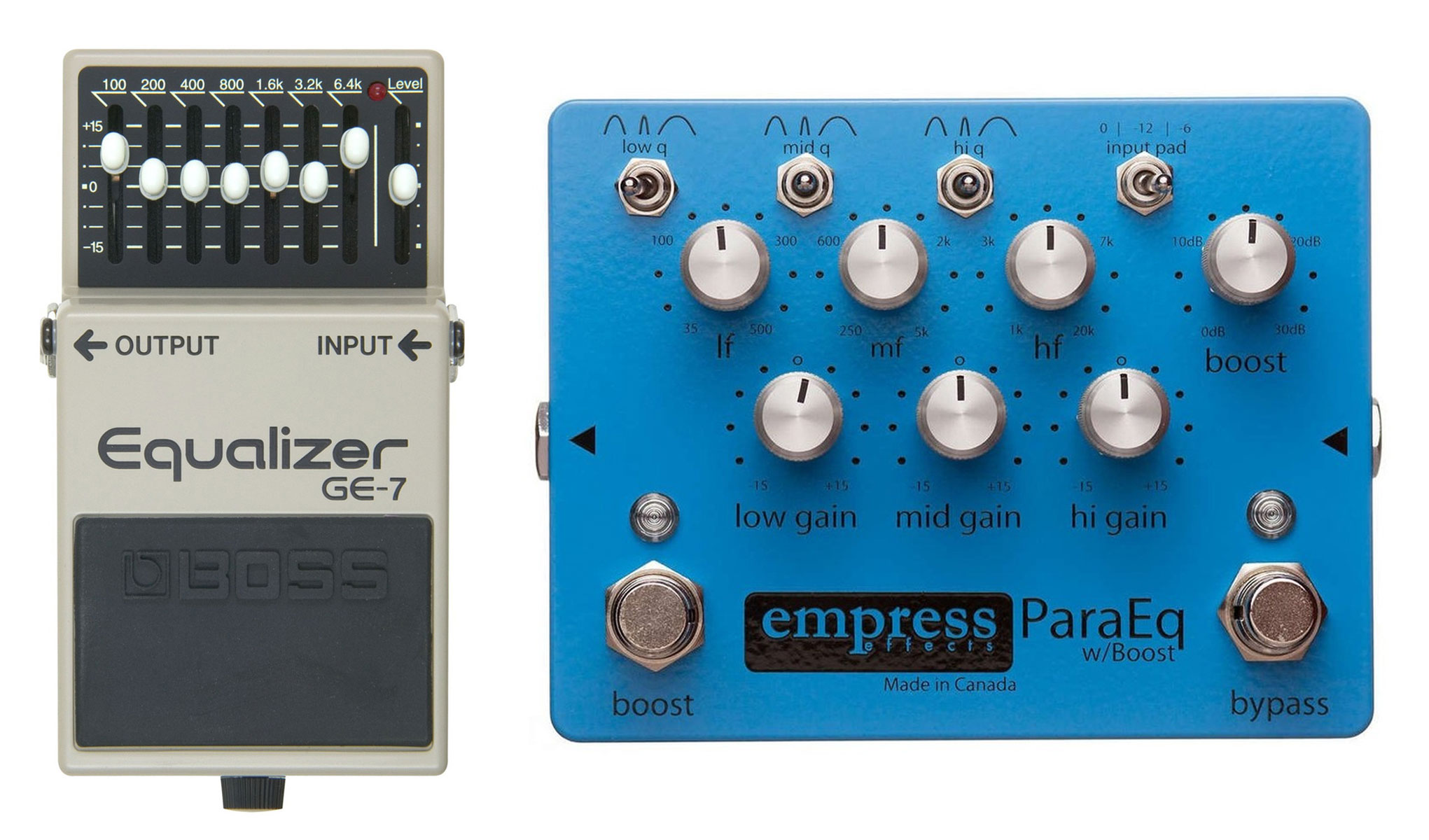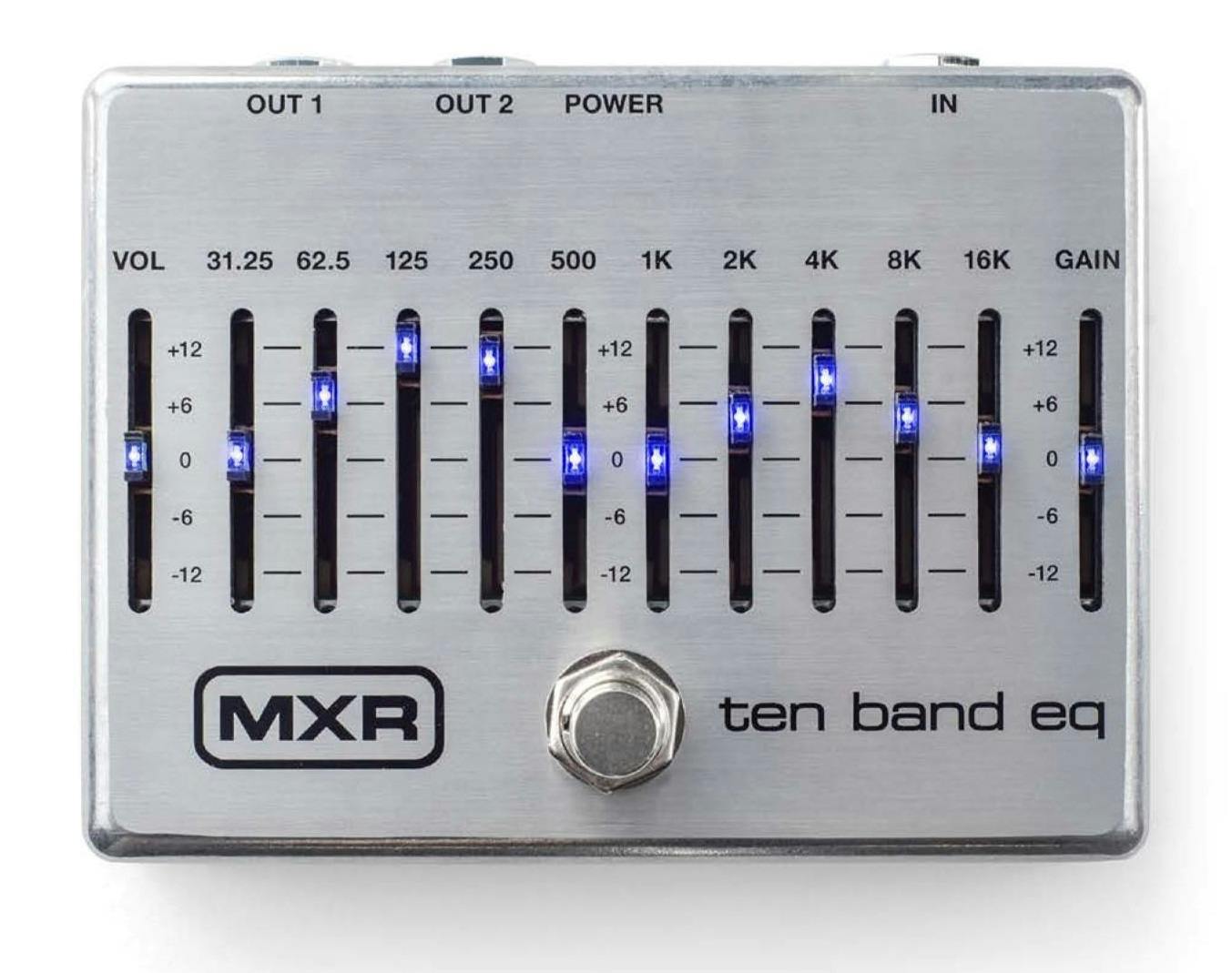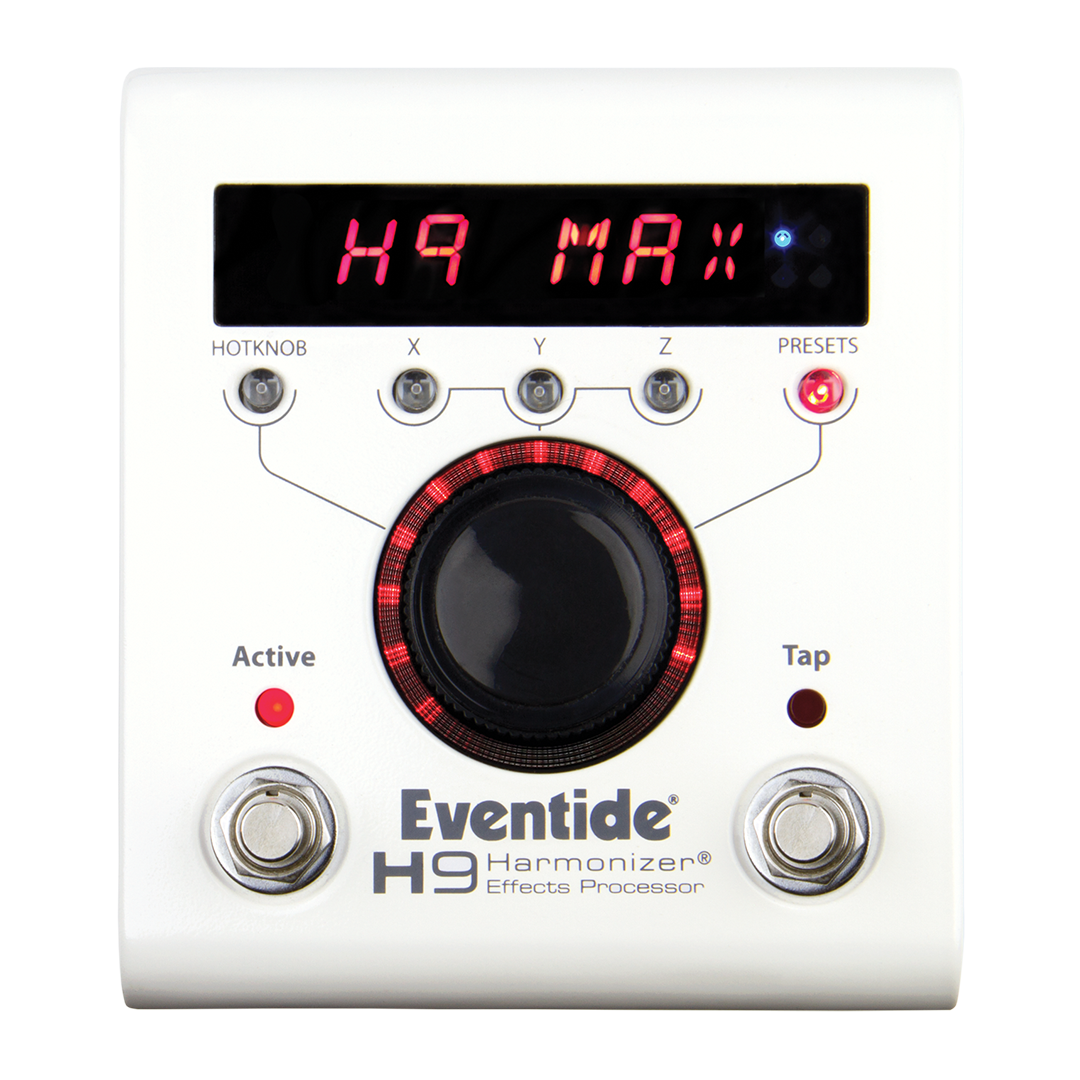What will I learn?
- What an EQ pedal is and how it works.
- The purpose of an EQ pedal.
- 3 effective and creative ways to use an EQ pedal in your guitar rig.
What is an EQ pedal?
An EQ is considered by many as a ‘utility’ pedal. Similar to a noise gate or an ABY unit, an EQ pedal isn’t used to generate an effect like a modulation or time-based pedal, but instead serves a more practical purpose.
Starting with the basics, ‘EQ’ is an abbreviation of ‘equalizer’. Representing the universal spectrum of sound, an equalizer defines where certain frequencies sit on this spectrum and is used to boost or cut them via linear filters. This process allows you to therefore manipulate the audible qualities of a sound or instrument, and in this case – a guitar.
Essentially, an EQ pedal is employed as a tone-shaping tool to improve the sound of your rig. But as you’ll find out later in this article, the functionality of an EQ stompbox is broader than you might expect, and it can be used in creative and unconventional ways too.
How does an EQ pedal work?
A compact equalizer pedal will let you affect guitar-centric frequencies only. Generally, the human ear can identify frequencies between 20Hz and 20kHz, but a guitar will typically occupy an area between 80Hz and 10kHz. Although that is a narrower window, it is still a fairly wide range, and many EQ pedals will give you control of frequencies between that specific bandwidth.
The majority of examples will sport a number of filtering sliders, with each one providing you with direct control of a certain set frequency. Sliders between 80Hz-250Hz will affect the lows, while 250Hz-800Hz is considered the mid-range, arguably the most vital area of your guitar sound. You’ll reach top-end territory beyond 800Hz, with 5kHz -10kHz the most present part of your tone.
Depending on how dramatically you move these sliders, the input signal running into an EQ pedal is subject to significant manipulation. There aren’t many other types of guitar pedals that can change your sound quite as drastically as an EQ can, making it a very powerful device.
Graphic vs. Parametric EQ
An EQ pedal with sliders is known as a ‘graphic’ EQ, and they can vary from between 5-band (5 sliders) to super-precise 10-band models. Boss’ infamous 7-band GE-7 Graphic Equalizer stompbox is a popular choice, striking the perfect balance between simple and sophisticated.
However, you can also find ‘parametric’ EQ stompboxes on the market too, which derive more closely from traditional mixing desks. Featuring knobs as opposed to sliders, a parametric EQ is more suitable for the fastidious tone-chasers. Letting you sweep the centre frequency to find particular sweet spots, parametric EQs offer greater control and aren’t quite as limited as their graphic counterparts can sometimes be. The Empress ParaEQ is a favoured choice, with multiple controls that allow for excellent signal manipulation.

3 Creative Ways to use an EQ Pedal:
Now that we’ve explained what EQ pedals are and how they work, let’s get to the fun part. In this next section, we’ll provide you with some clever methods that you can employ to get the most out of your EQ pedal!
1. To Discover New Sounds
We’ve already stated that an EQ pedal is fundamentally a tone-shaping tool. When the modest 3 or 4-band EQ section on your amplifier isn’t quite enough, an EQ pedal can give you almost surgical control over your sound.
While tone-enhancing is fantastic, especially in a studio environment, instead of refining your sound you can play around with some extreme settings to attain more unique textures.
Dimebag Darrell’s ‘Scooped’ Tone
For example, the late Dimebag Darrell (Pantera) popularised the ‘scooped’ guitar tone, whereby he removed practically all of the mid-range frequencies from his signal. Using high-gain Randall amps in conjunction with an old-school MXR 6-band EQ pedal, Dimebag pioneered a completely game-changing sound that many of his metal contemporaries took inspiration from in later years.
Apart from removing mid frequencies at 400Hz and 800Hz, Darrell would also boost at around 150Hz-200Hz to give his signature down-tuned riffs a fat and chunky quality. He was also notorious for raising the upper frequencies, to offer his solos lots of crisp articulation.
This would ensure that pinched harmonics (a common technique he used) could sing loud and clear, but it also prevented his sound from being muddy, considering the significant absence of mid-range. Listen to Pantera’s “Walk” (1993) for a perfect demonstration of Dimebag’s distinctive guitar tone:








Responses & Questions